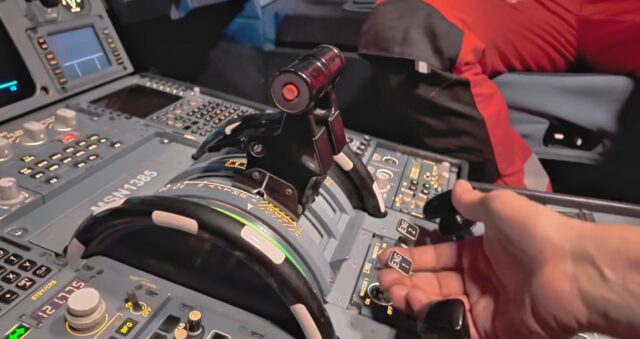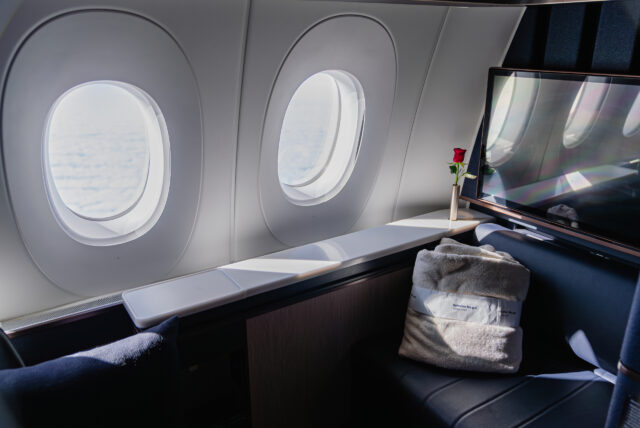UK airport 1st in world to transport passengers and luggage with driverless buses and tugs

August 15, 2025

Teesside Airport is set to become the first in the world to operate both autonomous baggage and passenger transport vehicles.
Following a nearly £1 million agreement with aviation technology company Aurrigo, the airport is set to host a pilot scheme launching this autumn.
It will see driverless vehicles trialled on site before entering full service in early 2026.
Driverless buses coming in the autumn
An eight-seat auto-shuttle passenger vehicle will begin test activities in October, while the Auto-DollyTug – an autonomous tug designed to move luggage and cargo – is scheduled to start operating from the publicly owned airport in January.
The autonomous vehicles will first operate landside at the airport’s new Connected Autonomous Mobility Test Centre, undergoing an extensive trial programme before transferring to airside duties early next year.

The trials will also involve integration with bulk-loading operations, enabling bulk baggage to be delivered directly to the aircraft hold loading teams.
‘Real-world “ready” opportunity’
David Keene MBE, CEO of Aurrigo, said: “Our Auto-Shuttle and Auto-DollyTugs are being deployed all across the world, but this will be the first time that we have integrated them together at a live airport.
“Our driverless vehicles present a real-world ‘ready’ opportunity to not only take a significant amount of carbon out of operations but also boost the speed and efficiency with which you can move passengers and bags airside in the process.”

Once live, the system will serve passengers flying out of Teesside to destinations such as Alicante, Malaga, and Amsterdam.
Tees Valley Mayor Ben Houchen said: “This is another massive first for our airport, our region, and our people – proving once again that where Teesside leads, the world follows.”
The trial was announced earlier this year, with the Tees Valley Combined Authority approving £2 million in March to establish a pilot hub for the project.
The Auto-DollyTug is designed to transport a single Unit Load Device (ULD) containing passenger baggage or cargo across airport sites, equipped with 360° obstacle detection and advanced situational awareness.
Its patented sideways drive system allows it to move laterally into tight spaces within baggage halls and around ground service equipment on the apron.

The vehicle’s ability to perform 360-degree turns, combined with integrated robotic arms, enables it to load and unload ULDs autonomously and with precision, improving efficiency and reducing manual handling.
“To have this technology in place early next year will mean bags will travel from check-in to plane even more seamlessly, and in an even greener way,” says Airport Managing Director Phil Forster. “We were first in the UK to install new security scanners to allow passengers to keep liquids and electronics in bags, and now we’re leading the world in driverless cargo and bag systems with Aurrigo.”
The rise of driverless vehicles at airports
Across the world, airports are embracing automation for the transport of passengers and bags in a bid to improve efficiency and cut carbon emissions.
The Aurrigo system is already in use at Cincinnati/Northern Kentucky International Airport, Amsterdam Schiphol Airport, and Zurich Airport in partnership with Swissport. World-famous Singapore Changi Airport has partnered with Aurrigo since 2023 to move bags with autonomous vehicles.
But other companies are involved in airport automation too. In Japan, Solution Systems has been trialling its driverless baggage tractors at Chubu International Airport since 2022, and in Dubai, dnata has rolled out autonomous baggage tractors from TractEasy with six vehicles in place as of July 2025.
For passenger transport, Zurich Airport has leveraged services from WeRide to provide autonomous shuttles, and for passengers with reduced mobility, Amsterdam Schiphol now offers self-driving wheelchairs to get them to the gate.
Automation is increasingly vital for airports, significantly improving efficiency, security, and the overall passenger experience. In an environment where airports are increasingly capacity-constrained, these technologies allow growth through efficiency, giving airports the means to accommodate ever-growing numbers of travellers.
















